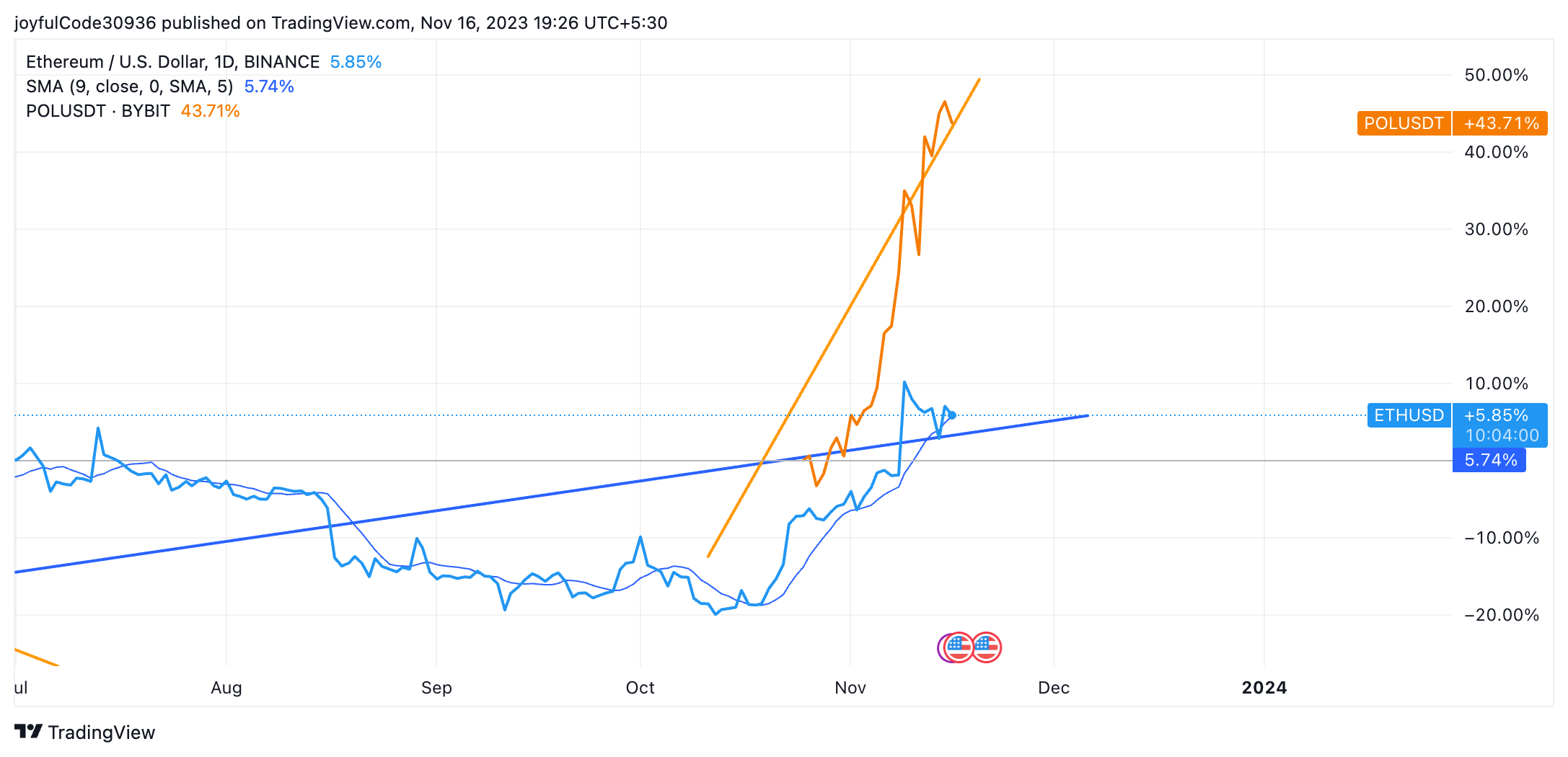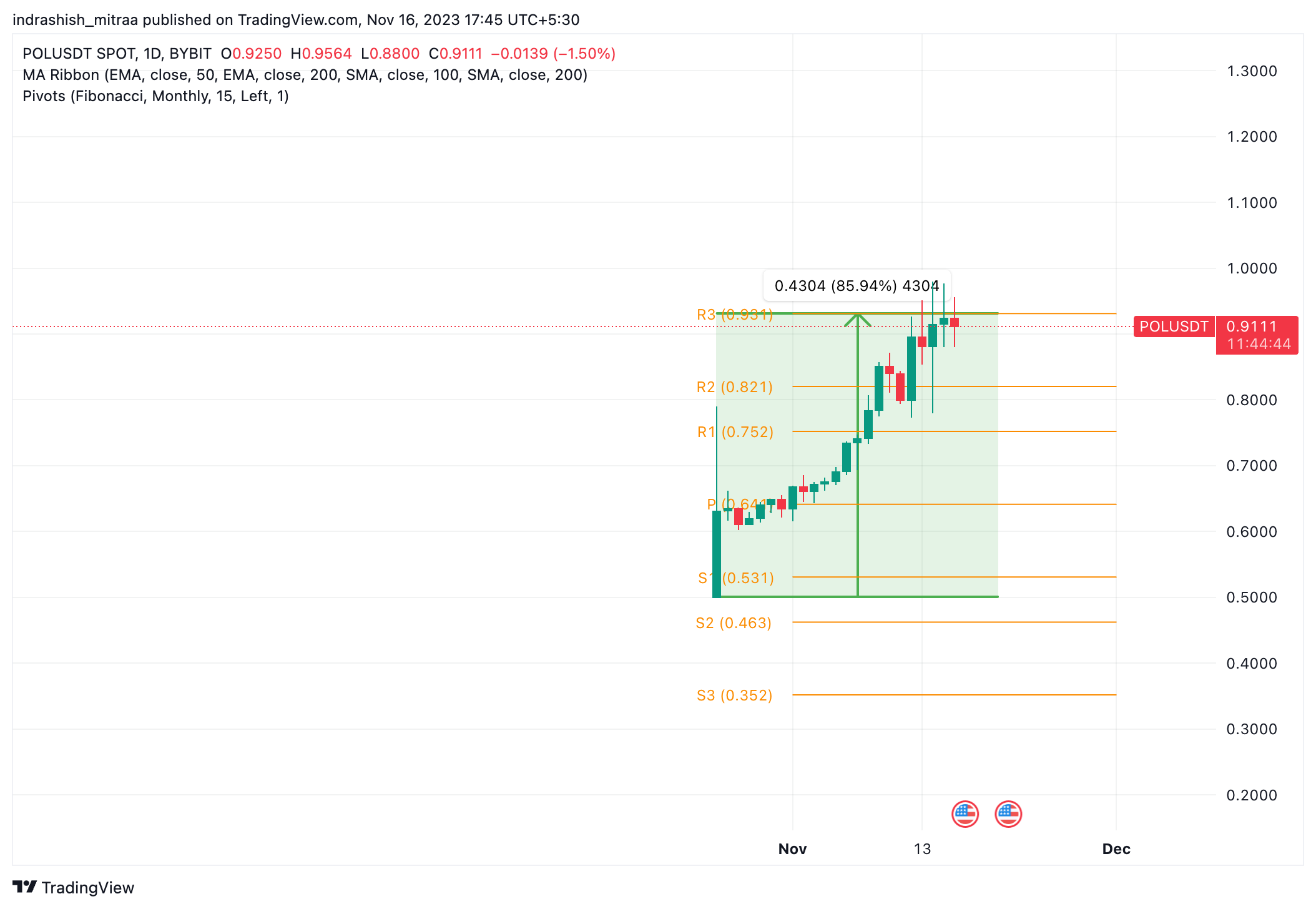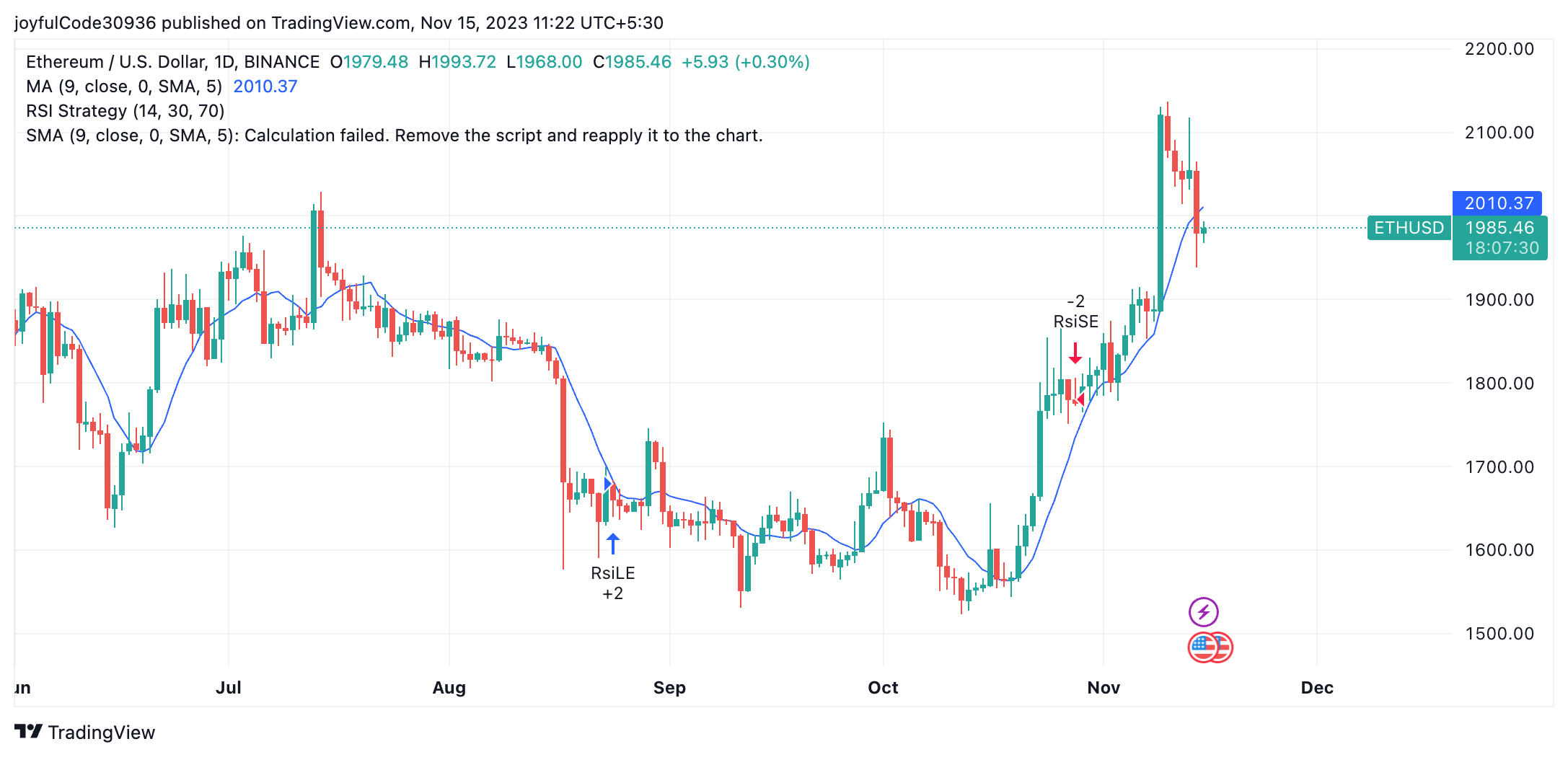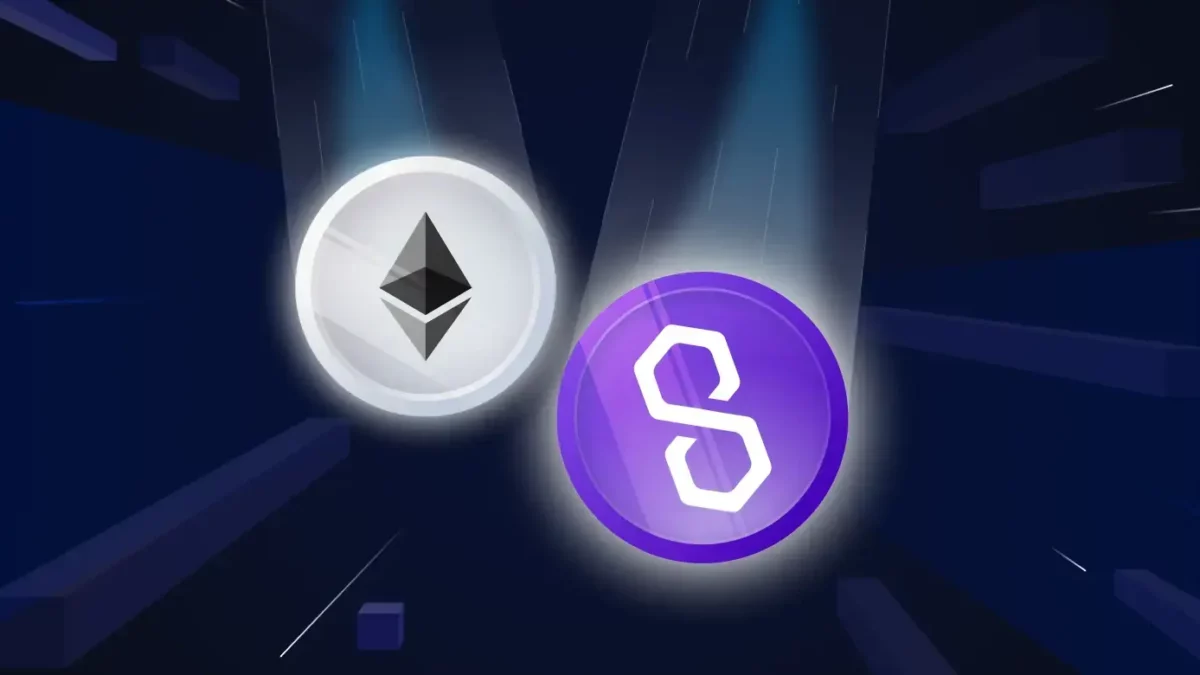Table of Contents
ToggleKey Takeaways:
- Operating as an Ethereum framework, Polygon boasts up to 65,000 transactions per second scalability.
- As a pioneer since 2015, Ethereum remains an expert in decentralized applications and smart contracts.
- Ethereum targets decentralized applications, while Polygon enhances scalability, offering investors distinct value propositions.
Introduction
The onset of the concept that Bitcoin introduced to the world led to the whole sector we now know as the crypto ecosystem. Soon after that, the first altcoin, Ethereum, came into the picture to tackle Bitcoin’s issues. Soon after, projects started to be built on the Ethereum blockchain, and the crypto world had crypto assets like Polygon, which surpassed Ethereum and garnered the name of ‘The Ethereum Killer’ for providing use cases very much similar to that of Ethereum, only better and faster.
In the following paragraphs, we are going to take a quick look at both tokens, understand how the Polygon 2.0 ecosystem is making a whole network for its usages, take a deep dive into their functionality, and how they stand different from one another, along with some more recent developments within their ecosystems.
What is Polygon (POL)?
The Polygon network, previously often referred to as the ‘Internet of Blockchain,’ has ventured into 15 different cryptos. However, its origins trace back to 2017 when it operated under the name MATIC. Established in October of that year by three Indians—Jaynti Kanani, Sandeep Nailwal, and Anurag Arjun—the Polygon network emerged in response to concerns about the limited scalability of Ethereum. Recognizing the potential hindrance this posed the founders aimed to address scalability issues and expand Ethereum’s possibilities.
Earlier this year, the Polygon ecosystem announced a shift that they are going to introduce to the network via POL. The POL token (Polygon Ecosystem Token) is crafted for a gradual four-year transition to replace the existing POLtoken, forming an integral aspect of Polygon 2.0.
In this evolution, Polygon transforms into a Polygon zkEVM validium, featuring its network of interoperable blockchains tailored for specific applications. POL introduces enhanced utility, such as restaking, enabling validators to secure additional chains within the Polygon supernet by restaking their POL tokens, thereby earning extra rewards.
Key Features of Polygon
- In line with the Polygon 2.0 specifications, Polygon is undergoing a transformation of its products to incorporate zero-knowledge technology, evolving into a comprehensive scaling solution for the Ethereum blockchain.
- This transformation involves reconfiguring the Polygon Proof-of-Stake (PoS) chain into a ZK validium Layer 2 network for the Ethereum blockchain.
- A supernet architecture is also being constructed to fuel a hub of ZK Layer 2 networks, all functioning within a cohesive ecosystem featuring an efficient interoperability design.
- As part of this upgrade, the POL token is set to transition into the POL token. The POL token will offer significantly enhanced utility, mirroring the expanded ecosystem, and will introduce new features such as restaking.
Additional Read: Bitcoin vs Polygon
Latest Polygon (MATIC) News:
- Unlocking the future, POL is set to become a next-generation token that can power a vast ecosystem of ZK-based L2 chains.
The POL token upgrade is now live on Ethereum mainnet.
Polygon 2.0, released this summer, is a roadmap for scaling Ethereum to build the Value Layer of the Internet. POL unlocks that future.
POL is a next-generation token that can power a vast ecosystem of ZK-based L2 chains.… pic.twitter.com/gmrsu0ZqLz
— Polygon (Labs) (@0xPolygonLabs) October 25, 2023
- The POL token has been pique-ing investors’ interests since its launch earlier in November 2023 and reaching new heights!
Polygon Ecosystem Token reached a new all-time high of $0.93816. 📈$POL #POL #PolygonEcosystemToken
— BTCATH – All-Time High Alert (@btcathbot) November 13, 2023
5 Benefits of Polygon POL Token
POL introduces several key advantages for the Polygon ecosystem.
- Enhanced Ecosystem Security: The implementation of a highly decentralized pool of Proof-of-Stake (PoS) validators ensures security, resilience, and impartiality across all Polygon chains. Validators are incentivized to participate in the pool, bolstering the security of multiple chains simultaneously.
- Unlimited Scalability: POL facilitates the exponential expansion of the Polygon ecosystem, paving the way for widespread adoption. This allows the validator pool to scale seamlessly, accommodating thousands of Polygon chains without compromising security.
- Sustained Ecosystem Support: Acknowledging the early stages of the Polygon ecosystem and the broader industry, ongoing support will be crucial in the years ahead. POL provides a sustainable, in-protocol mechanism for supporting these activities.
- Frictionless Operation: Unlike many blockchain protocols that necessitate users and developers to hold, stake, or consume native tokens, POL is designed to eliminate such friction. This ensures a seamless user and developer experience without hindrances.
- Community Governance: With decentralization at its core, Polygon envisions community governance. POL is structured to possess governance rights, allowing its utilization in governance frameworks and reinforcing the community-driven nature of Polygon.
Ethereum(ETH) vs Polygon(POL): Comparative Analysis
| Comparison Basis | Ethereum (ETH) | Polygon (MATIC) |
| Launch date | 2015 | 2023 |
| Founders | Vitalik Buterin and Gavin Wood | Jaynti Kanani, Sandeep Nailwal, and Anurag Arjun |
| Blockchain protocol | Ethereum Blockchain | Polygon Chain working for Ethereum Mainnet |
| Token type | Native | Native |
| Market Cap* | $238,348,166,618 | $55,377,135 |
| Circulating Supply** | 120,256,040 ETH | 59,586,776 POL |
| Consensus method | Proof of Stake (PoS) | Proof of Stake (PoS) |
MarketCap* and Circulation Supply** as of November 2023. Data sourced from CoinMarketCap.
What is Ethereum?
Key Features of Ethereum
- Ethereum introduced smart contracts, self-executing contracts with the terms of the agreement directly written into code.
- Developers can build decentralized applications on the Ethereum blockchain, enabling trustless and censorship-resistant applications.
- Ethereum’s native crypto is used for transactions and as a reward for miners who secure the network.
-
A Turing-complete virtual machine that executes smart contracts, making Ethereum versatile for various applications.
-
Ethereum supports the creation of DAOs, organizations run by code rather than people, with decisions made through consensus.
Latest Ethereum (ETH) News:
- Boyaa Interactive, one of the largest Chinese gaming companies, recently announced that it is planning to invest in crypto tokens, such as Bitcoin and Ethereum.
China’s Boyaa Interactive to Spend $90M on Bitcoin and Ethereumhttps://t.co/ZFtokZ7sfu
— Watcher.Guru (@WatcherGuru) November 14, 2023
- In his recent post, the Ethereum founder Vitalik Buterin commented that the once-prominent Ethereum layer 2 scaling solution, Plasma, is underrated and that a “significant security upgrade” for chains that would otherwise be validiums.
Exit games for EVM validiums: the return of Plasmahttps://t.co/QgyzXAl0wv
— vitalik.eth (@VitalikButerin) November 14, 2023
Ethereum (ETH) vs Polygon(POL): Key Differences
| Feature | Ethereum (ETH) | Polygon (POL) |
|---|---|---|
| Blockchain Architecture | Ethereum operates on a proof-of-work (PoW) consensus algorithm. | Polygon uses a Proof of Stake (PoS) consensus algorithm. |
| Scalability | Limited scalability leads to higher transaction fees and slower confirmation times during network congestion. | Polygon is designed to enhance Ethereum’s scalability, providing faster and cheaper transactions. |
| Layer 2 Scaling Solution | Ethereum is exploring layer 2 solutions like Optimistic Rollups and zk-Rollups. | Polygon is a layer 2 scaling solution for Ethereum, offering various scaling technologies, including PoS and sidechains. |
| Native Token | ETH | MATIC |
| Use Cases | Mainly used for decentralized applications (DApps) and smart contracts. | Designed to enhance Ethereum’s capabilities, Polygon is also suitable for DApps, but with improved scalability and lower costs. |
| Security Model | Relies on PoW for security, which can be resource-intensive. | Utilizes PoS, offering a more energy-efficient and cost-effective security model. |
| Transaction Speed | Transaction confirmation times can vary and can be slower during network congestion. | Offers faster transaction speeds and lower fees due to its layer 2 scaling solutions. |
| Adoption and Ecosystem | Ethereum has a well-established and diverse ecosystem with widespread adoption. | While growing, Polygon’s ecosystem is not as extensive as Ethereum’s, but it benefits from interoperability with the Ethereum network. |
| Development Frameworks | Solidity is the primary programming language for Ethereum smart contracts. | Supports Solidity, making it compatible with Ethereum’s existing development tools and languages. |
Polygon (POL) and Ethereum (ETH) Technical Analysis

Source: TradingView
The ETH price has seen significant price movements so far in 2023, with a 65% rise in its value as of the first week of November 2023, whereas the recently launched token, POL, has shown good recovery ever since its mainnet launch – having risen from just under $0.5 to over $0.91 as of writing this article – displaying a near 86% rally in the process.
Regarding the price movements in Ethereum, the anticipated change in its ecosystem is expected to positively impact the ETH prices; however, it needs to regain its previous $2100 mark to break through the drought phase it has been trading on for a while.
Learn More: Litecoin vs Ethereum
Polygon Price Prediction 2023

Source: TradingView
The Polygon POL token is trading at a value of $0.91 at the time of writing, trying hard to break through the $1 mark. The current chart shows that POL’s price may tend to hit slightly bearish values and then surge to reach the $1 mark it had attempted to reach for a while. The current price is up by 0.66% in the last 24 hours, and if the MA breaks through the inverted triangle, the POL price will have the opportunity to hit the desired mark of $1 by the end of this week.
If the token continues to carry on as it has been in the past few days, the POL price may trade above $1 by the first week of December and end 2023, attempting to reach $1.2.
Note: The price prediction has been done basis the MATIC token, but it stays true for POL as the new token is set to phase out the MATIC tokens in the coming years.
Read More: Polygon Price Prediction
Ethereum Price Prediction 2023

Source: TradingView
The biggest altcoin, according to the market cap, Ethereum, is trading at $1982 at the time of writing, which is 3% lower than yesterday and a total of 5% higher in terms of the last 7 days. As the price trajectory for Ethereum has been quite eventful all through 2023, the MA is showing the possibility for the ETH price to reach $2000. ETH’s price needs to regain that level and stay above the $2000 mark to continue its bullishness. If the asset manages to break through the $2000 level, it can make an attempt to reach close to the $2100 level by the second week of December.
Looking back at the price behavior for Ethereum in 2023 and the anticipation for next hard fork upgrade named Ethereum Cancun-Deneb (Dencun), the ETH price may see a surge it can help Ethereum to enter 2024 with a value close to $2080.
Read On: Ethereum Price Prediction
Should You Buy POL or ETH?
Fundamentally, both the tokens, POL and ETH, have different ways of catering to the crypto world. While Ethereum is a layer 1 ecosystem that brought in the concept of dApps and Smart Contracts into crypto, Polygon built itself upon Ethereum and introduced better offerings than ETH with higher scalability and lower gas fees.
Since its inception, Ethereum has made some significant changes, starting with the Ethereum Merge, where the whole blockchain transitioned from its Proof of Work consensus mechanism to a much more energy-efficient Proof of Stake consensus mechanism. Following the change, there have been further developments that have taken several EIPs into action and worked on making the staked ETH available for the stakers. However, this has been just the start of all the improvement plans that Vitalik has planned for the crypto.
Coming to Polygon, the crypto project has been partnering with various crypro projects to build a better ecosystem for there Web3 world we are walking towards. Even though the growth of Polygon has been slow, the new token of the network, POL, is set to transform the Polygon ecosystem for the better. The new ecosystem is bringing together all the features POL has built over the years. Undeniably, Polygon is still the best Layer 2 network on Ethereum and hosts some of the best technology present to make the Ethereum network run faster, better, and more efficiently.
While choosing between these crypt assets, it is imperative to have thorough research done on them, along with making notes to see if they fit your trading strategies.
How to Invest in Ethereum and Polygon?
Investing in crypto is super simple, safe, and secure with the CoinDCX app. It doesn’t matter whether you want to buy Ethereum or wish to trade Polygon price today; we have got you covered.
Here are the 3 simple steps to buy your first POL or ETH with CoinDCX.
- Sign up on CoinDCX
- Complete your KYC
- Link your bank details and transfer funds
- Buy Polygon (POL) or Buy Ethereum (ETH)
Related posts
Understanding the Different Types of Cryptos: Coins, Tokens, Altcoins & More Explained
Explore the major types of crypto assets and their unique roles.
Read more
PAWS Telegram Game: The New Tap to Earn Game That Is Beating Hamster Kombat
Discover how to play and earn with PAWS Telegram game.
Read more


